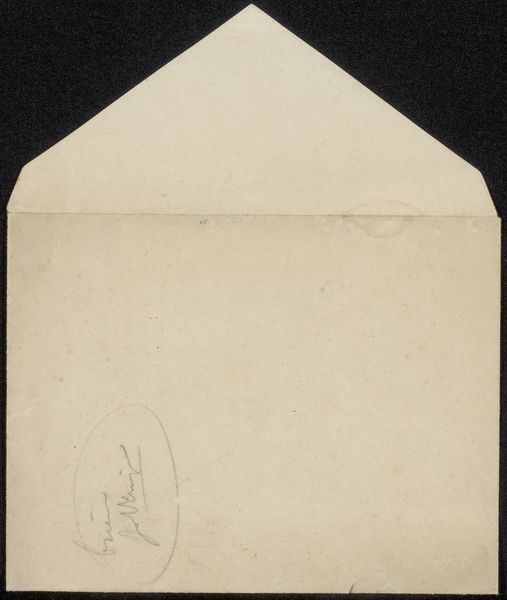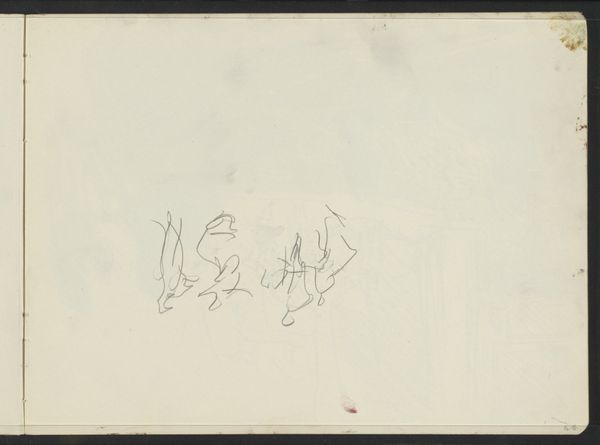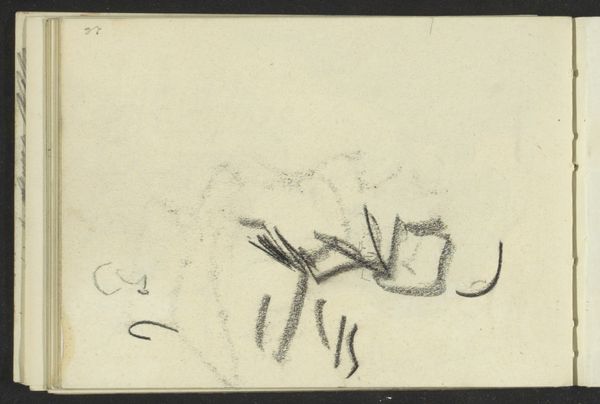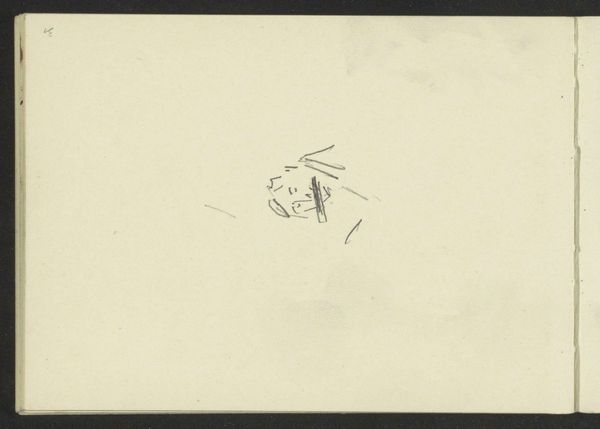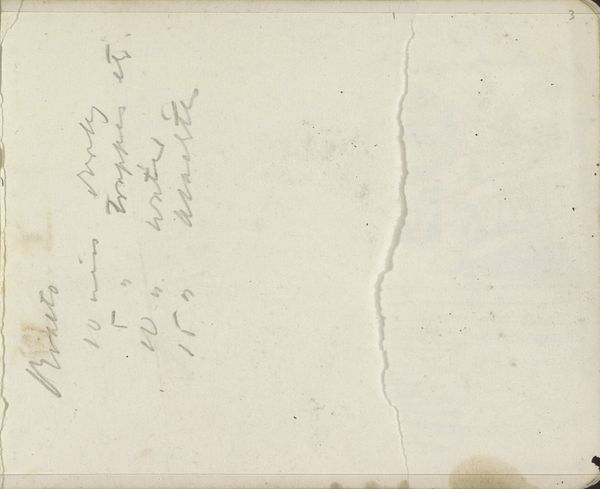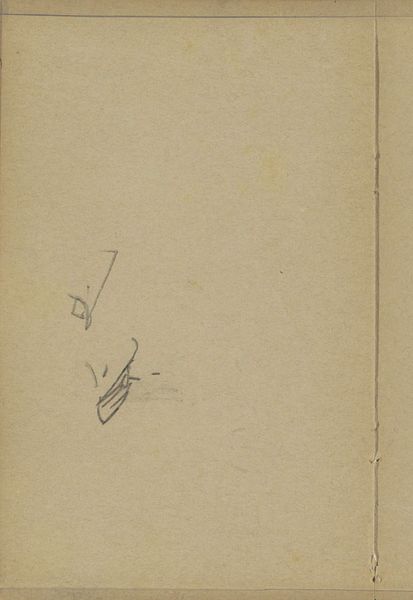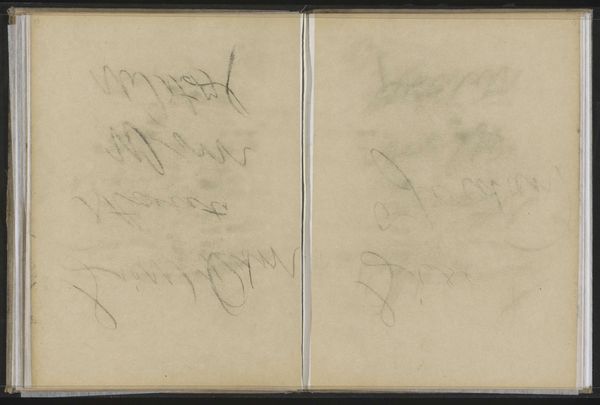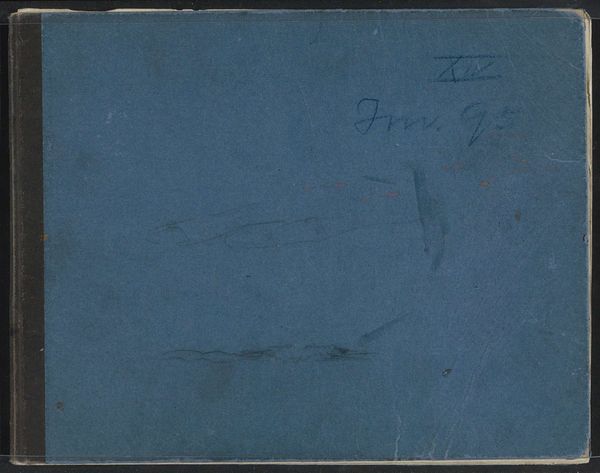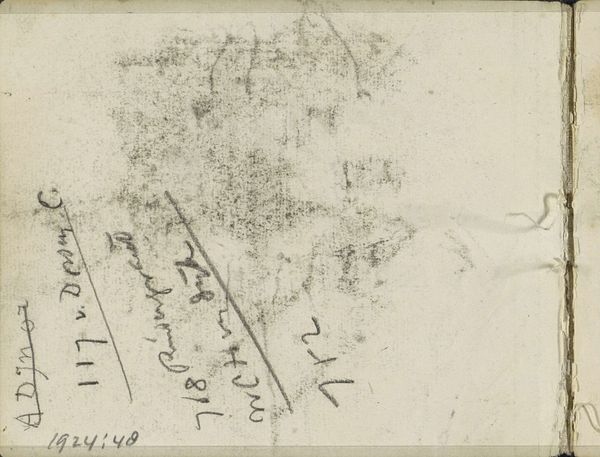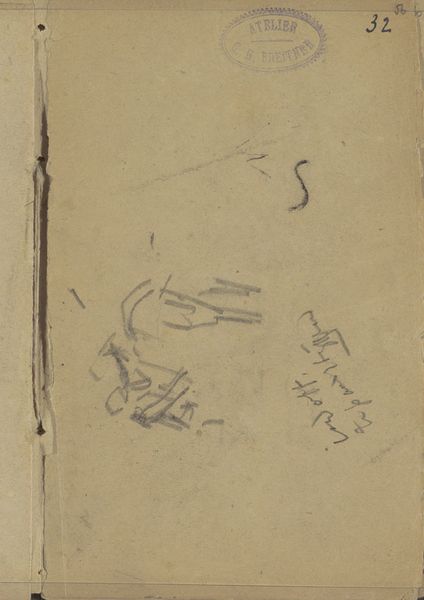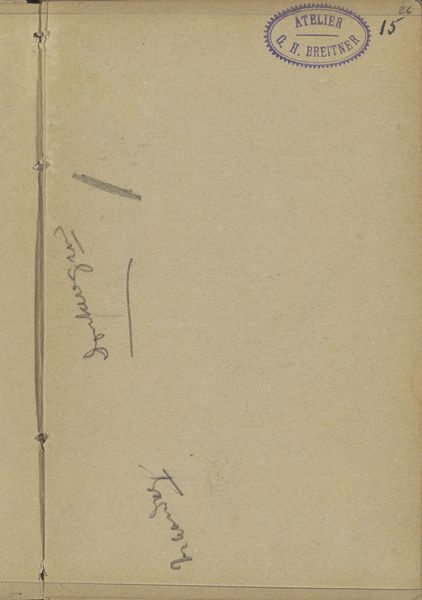
drawing, mixed-media, paper, pencil
#
portrait
#
drawing
#
imaginative character sketch
#
mixed-media
#
toned paper
#
light pencil work
#
sketch book
#
incomplete sketchy
#
paper
#
personal sketchbook
#
ink drawing experimentation
#
pen-ink sketch
#
pencil
#
sketchbook drawing
#
sketchbook art
Copyright: Rijks Museum: Open Domain
Editor: So this is "Envelop aan Philip Zilcken", a mixed-media drawing on paper, placing it somewhere between 1911 and 1930. It's clearly just a fragment, a quickly dashed-off sketch on what looks like the back of an envelope or perhaps scrap paper. How do you interpret a piece like this, incomplete and so informal? Curator: It’s precisely that informality which intrigues me. Considering the era – the early 20th century – think about the societal role of portraiture and letter writing. Formal portraiture was often tied to social status, reinforcing power structures. Letters, while personal, were still bound by conventions. Editor: Right. Curator: This piece, however, disrupts those expectations. It’s a glimpse into private communication, a rapid impression rather than a polished presentation. What does the 'envelope' status imply about value? Editor: Perhaps it signals a disregard for traditional artistic value? Almost like it wasn’t intended for public viewing or gallery display? Curator: Precisely! It potentially offers us a less mediated view of both the artist and the recipient, Philip Zilcken. Who *was* Zilcken in the art world at the time? What role did his status play here? How might knowing that relationship change how we perceive the image? Also, it's significant it was made *after* the breakthrough of modernism, perhaps even intended in defiance of it? Editor: I see, viewing it as more of a social artifact than a strictly aesthetic one makes a lot of sense! It makes me wonder about all the discarded or unseen art that exists, and how it shapes our understanding of artistic movements. Curator: Exactly. This fragment compels us to think beyond the framed canvas and consider the broader social and cultural context of art production and consumption, and consider the political implications of those choices.
Comments
No comments
Be the first to comment and join the conversation on the ultimate creative platform.
